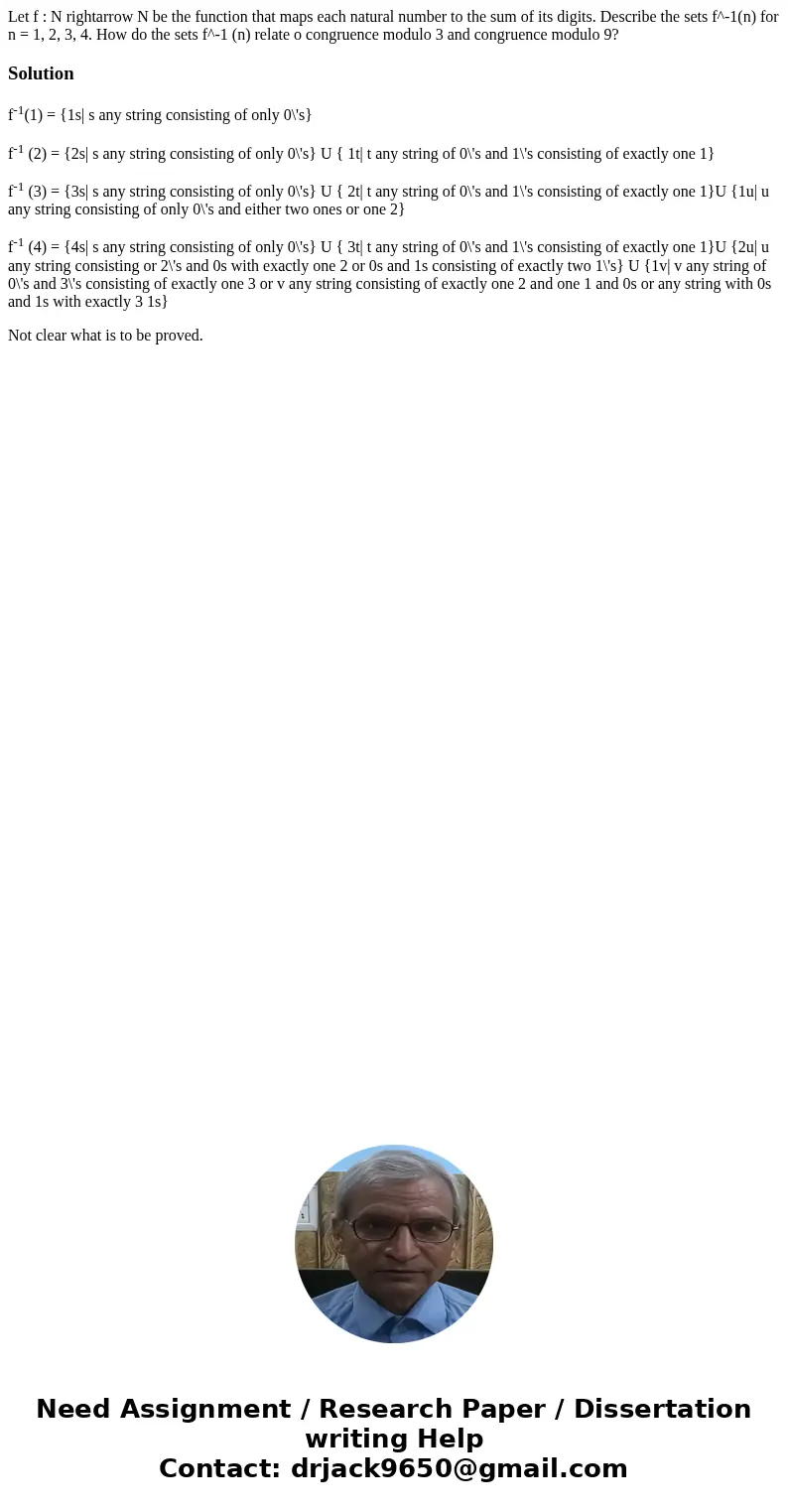Let f N rightarrow N be the function that maps each natural
Solution
f-1(1) = {1s| s any string consisting of only 0\'s}
f-1 (2) = {2s| s any string consisting of only 0\'s} U { 1t| t any string of 0\'s and 1\'s consisting of exactly one 1}
f-1 (3) = {3s| s any string consisting of only 0\'s} U { 2t| t any string of 0\'s and 1\'s consisting of exactly one 1}U {1u| u any string consisting of only 0\'s and either two ones or one 2}
f-1 (4) = {4s| s any string consisting of only 0\'s} U { 3t| t any string of 0\'s and 1\'s consisting of exactly one 1}U {2u| u any string consisting or 2\'s and 0s with exactly one 2 or 0s and 1s consisting of exactly two 1\'s} U {1v| v any string of 0\'s and 3\'s consisting of exactly one 3 or v any string consisting of exactly one 2 and one 1 and 0s or any string with 0s and 1s with exactly 3 1s}
Not clear what is to be proved.

 Homework Sourse
Homework Sourse